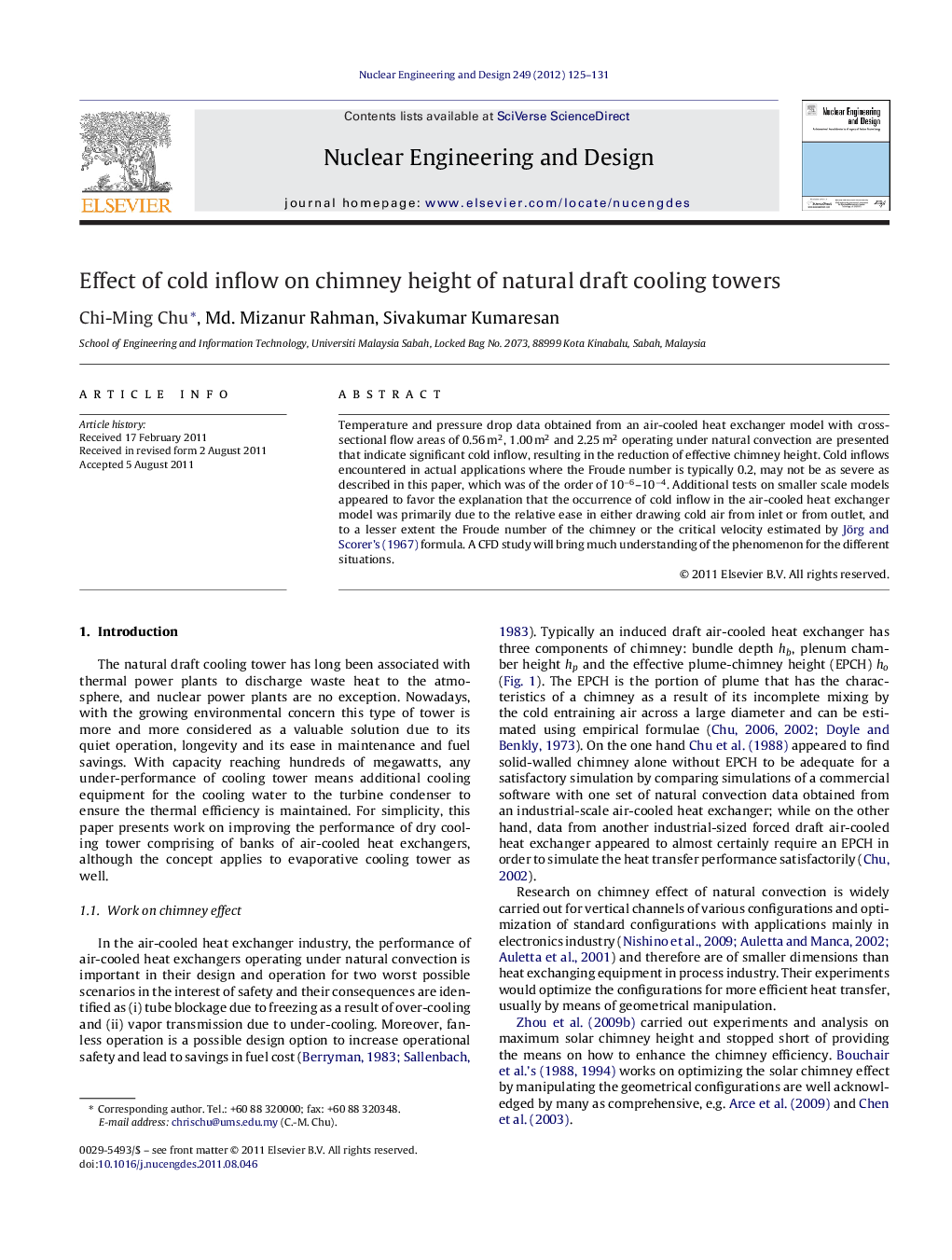| Article ID | Journal | Published Year | Pages | File Type |
|---|---|---|---|---|
| 297171 | Nuclear Engineering and Design | 2012 | 7 Pages |
Temperature and pressure drop data obtained from an air-cooled heat exchanger model with cross-sectional flow areas of 0.56 m2, 1.00 m2 and 2.25 m2 operating under natural convection are presented that indicate significant cold inflow, resulting in the reduction of effective chimney height. Cold inflows encountered in actual applications where the Froude number is typically 0.2, may not be as severe as described in this paper, which was of the order of 10−6–10−4. Additional tests on smaller scale models appeared to favor the explanation that the occurrence of cold inflow in the air-cooled heat exchanger model was primarily due to the relative ease in either drawing cold air from inlet or from outlet, and to a lesser extent the Froude number of the chimney or the critical velocity estimated by Jörg and Scorer's (1967) formula. A CFD study will bring much understanding of the phenomenon for the different situations.
► Natural convection data were obtained from an air-cooled heat exchanger model. ► The extent of cold inflow was quantified to relate to the decrease in effective chimney height. ► Installation of wire mesh screen on chimney outlet blocked off cold inflow to improve the chimney efficiency. ► Evidence of existence of effective plume-chimney for when cold inflow was blocked off warrants further work.
